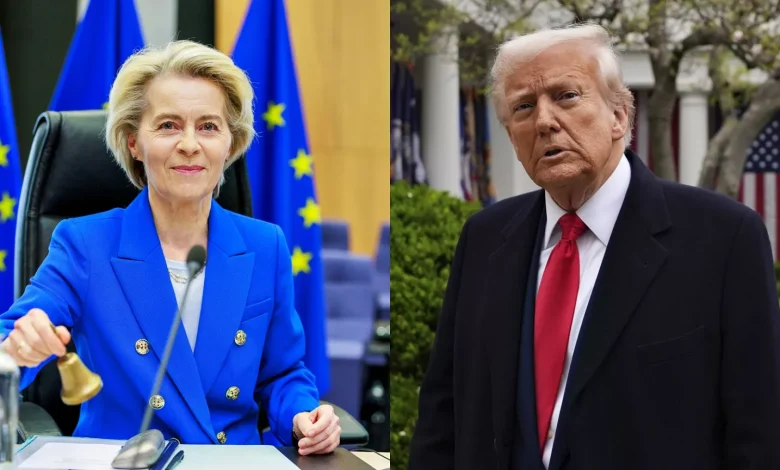Trump’s Tariff Threat Looms Over EU Trade Talks

President Donald Trump’s bold trade strategy has once again shaken global markets, with the European Union at the center of his latest tariff saga. On May 23, 2025, Trump sent shockwaves through the financial world, announcing a potential 50% tariff on all EU imports to the U.S., set to take effect June 1, citing stalled trade negotiations. Just days later, on May 25, he dialed back the pressure, extending the deadline to July 9 after a “very nice call” with European Commission President Ursula von der Leyen. Here’s what you need to know about this high-stakes trade showdown and what it means for global markets.
Trump’s Tariff Threat: A Bold Opening Move
In a fiery post on Truth Social, Trump expressed frustration with the EU, accusing the bloc of “taking advantage” of the U.S. with a trade deficit exceeding $250 billion annually. He declared that trade talks were “going nowhere,” threatening a massive 50% tariff on EU goods—ranging from German cars to French luxury handbags—starting June 1. The announcement, a sharp escalation from the existing 10% tariff, roiled markets, with the Stoxx Europe 600 index dropping 1.7% and U.S. stock futures taking a hit.
This wasn’t the first tariff jab. In April, Trump introduced “Liberation Day” tariffs, setting a 20% levy on EU goods, later reduced to 10% to allow a 90-day negotiation window ending July 9. His sudden push for 50% tariffs blindsided EU negotiators, who had been working toward a deal under the original timeline.
A Step Back: July 9 Deadline Offers Breathing Room
After a weekend of intense diplomacy, Trump announced on May 25 that he had agreed to delay the 50% tariffs until July 9, following a productive call with von der Leyen. “She said she wants to get down to serious negotiations,” Trump told reporters in New Jersey, signaling a willingness to “rapidly get together and see if we can work something out.” Von der Leyen echoed the sentiment on X, emphasizing the EU’s readiness to “advance talks swiftly and decisively” to maintain the world’s largest trade relationship, valued at $1.8 trillion annually.
European markets breathed a sigh of relief, with the Stoxx 600 rebounding 1% on May 26 as investors welcomed the extended timeline. EU Trade Commissioner Maroš Šefčovič confirmed “good calls” with U.S. officials, including Commerce Secretary Howard Lutnick, underscoring the bloc’s commitment to a fair deal.
What’s at Stake?
The stakes couldn’t be higher. A 50% tariff could devastate EU exports like BMWs, Italian olive oil, and French wines, while raising U.S. consumer prices. Analysts warn of a potential recessionary impact in Europe, with one estimate suggesting a 1% GDP drop at lower tariff levels. The EU has floated a “zero-for-zero” tariff offer on cars and industrial goods, but Trump’s push for U.S.-based manufacturing and his “America First” stance complicate negotiations.
Market watchers remain cautious. “Buckle up; this ride’s far from over,” one analyst noted, highlighting Trump’s unpredictable negotiating style. While the delay offers hope, the threat of tariffs looms large, with potential ripple effects on supply chains and inflation.
What’s Next for U.S.-EU Trade?
With the clock ticking toward July 9, both sides are under pressure to deliver. The EU is pushing for mutual respect and a balanced deal, while Trump’s team, including Treasury Secretary Scott Bessent, sees tariffs as leverage to extract concessions. Will the EU bend, or will Trump’s hardball tactics spark a broader trade war? Stay tuned as these talks unfold.
